Every year since 6 years in a row a fleet of some 20 monohulls accompanied by two large catamarans and a TV-crew of the first German broadcaster ARD sets sails for a good cause. A fun regatta, of course, but one that creates a lot of awareness – The annual edition of the “Rose of Charity” reaches more people at the TV-sets than the Oscars. I´ve had the pleasure to being part of last year´s edition aboard a Beneteau Oceanis 48 when my company was a partner in the race – this year the organizers approached me if I´d like to take care of a boat as skipper as well – no question, I hired instantly!
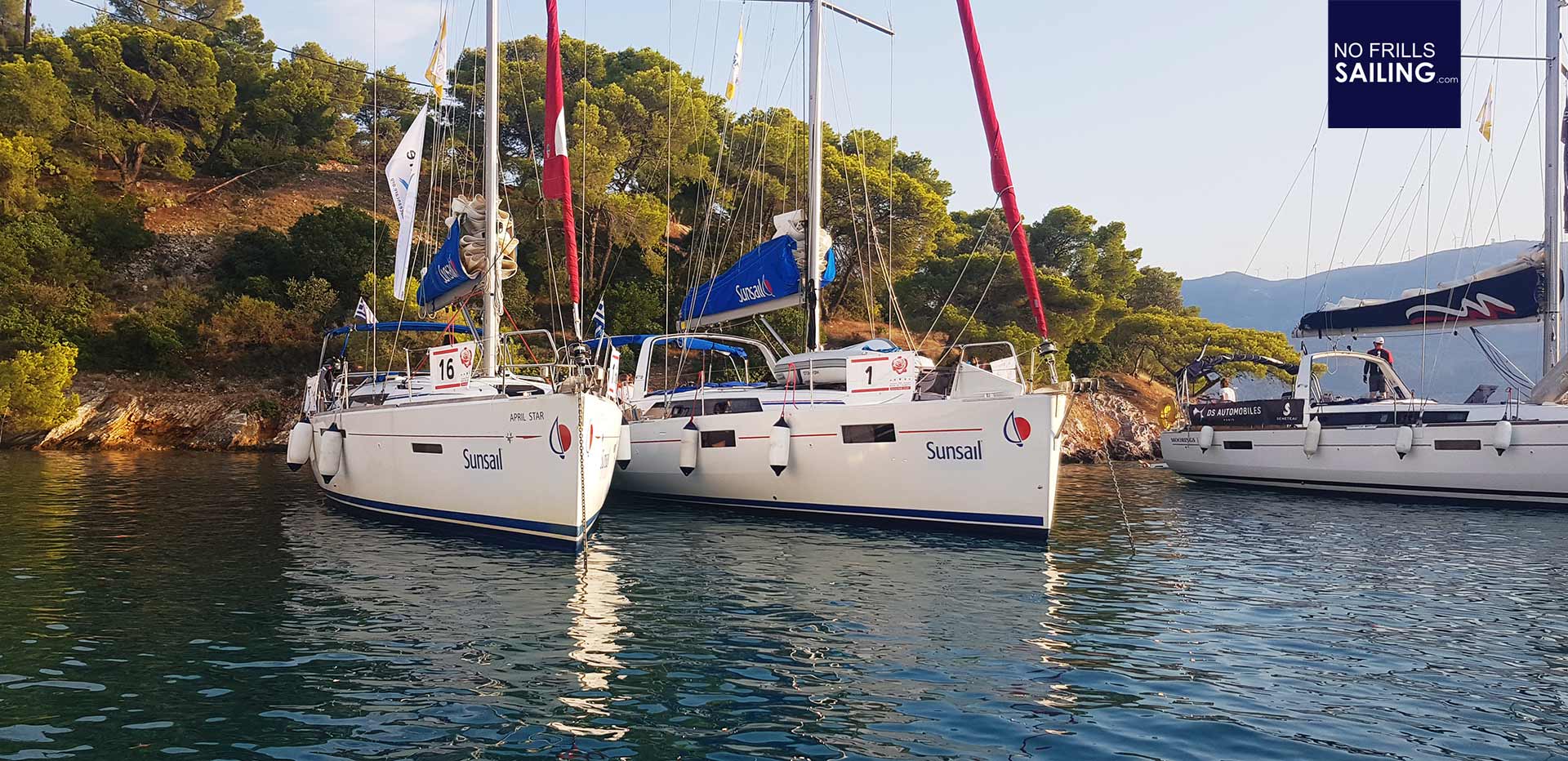
Not because I am hungry for being part of the well-picked VIP-crew manning the boats: All in all a nice colorful setup of some 90 actresses and actors, the German A to C-garde carefully chosen by the organizers. I agreed because every single mile under sails is an opportunity for me to improve my own sailing skills as well as my abilities as skipper. This time the organizers handed me command of SY APRIL STAR, a somewhat veteran ship, being 12 years old now. A Sunsail 41, that said, she was a Jeanneau by heart. I boarded APRIL STAR one day before my crew arrived to get acquainted with the boat and her equipment.
The “Rose of Charity”-fleet in Greece
Approximately half a year before the fleet sets sails for “The Race” all actors gather for “The Academy” to receive some training, sailing practice or to begin with, acquire their basic sailing licences – an occasion I as well participated as a sailing trainer in 2 years ago. So for the aspiring actors it´s always a big deal meeting for the race, more so because the location of the race is kept secret until a handful of weeks prior to the start.
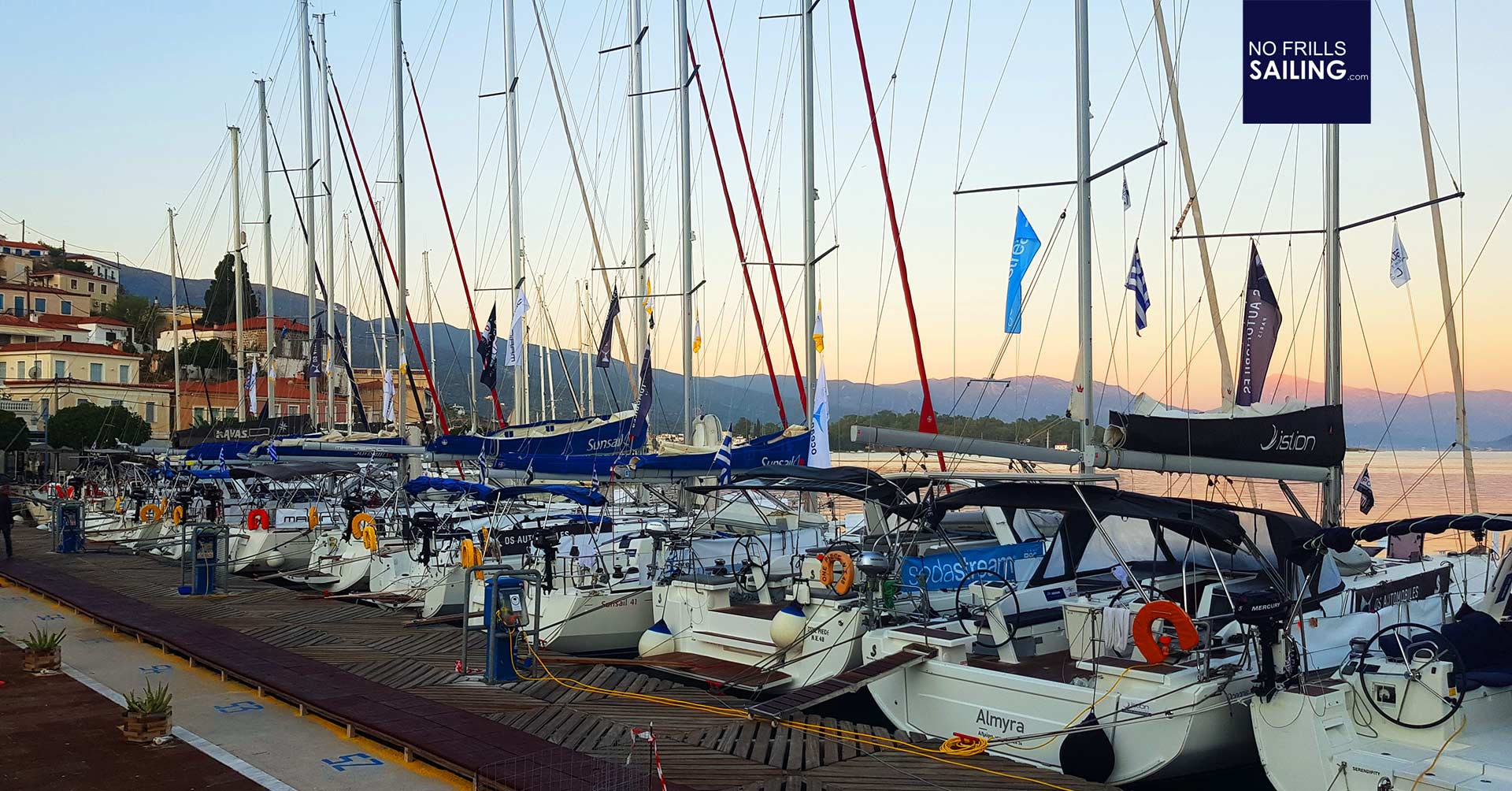
This year´s edition of “The Rose of Charity” started in Piräus, Athen´s big port, in Zeas Marina where the fleet provided by Sunsail/Moorings occupied a whole pontoon. I occupied the starboard aft cabin as this is traditionally the place for the skipper. My crew consisted of Kimberly, herself being Marketing Manager of Marinepool – one of the major partners and sponsors of this regatta – and Niclas Entrup, who is one of the leading figures of Ocean Care, an association that fights for cleaner oceans and protection of marine wildlife for over 30 years now.
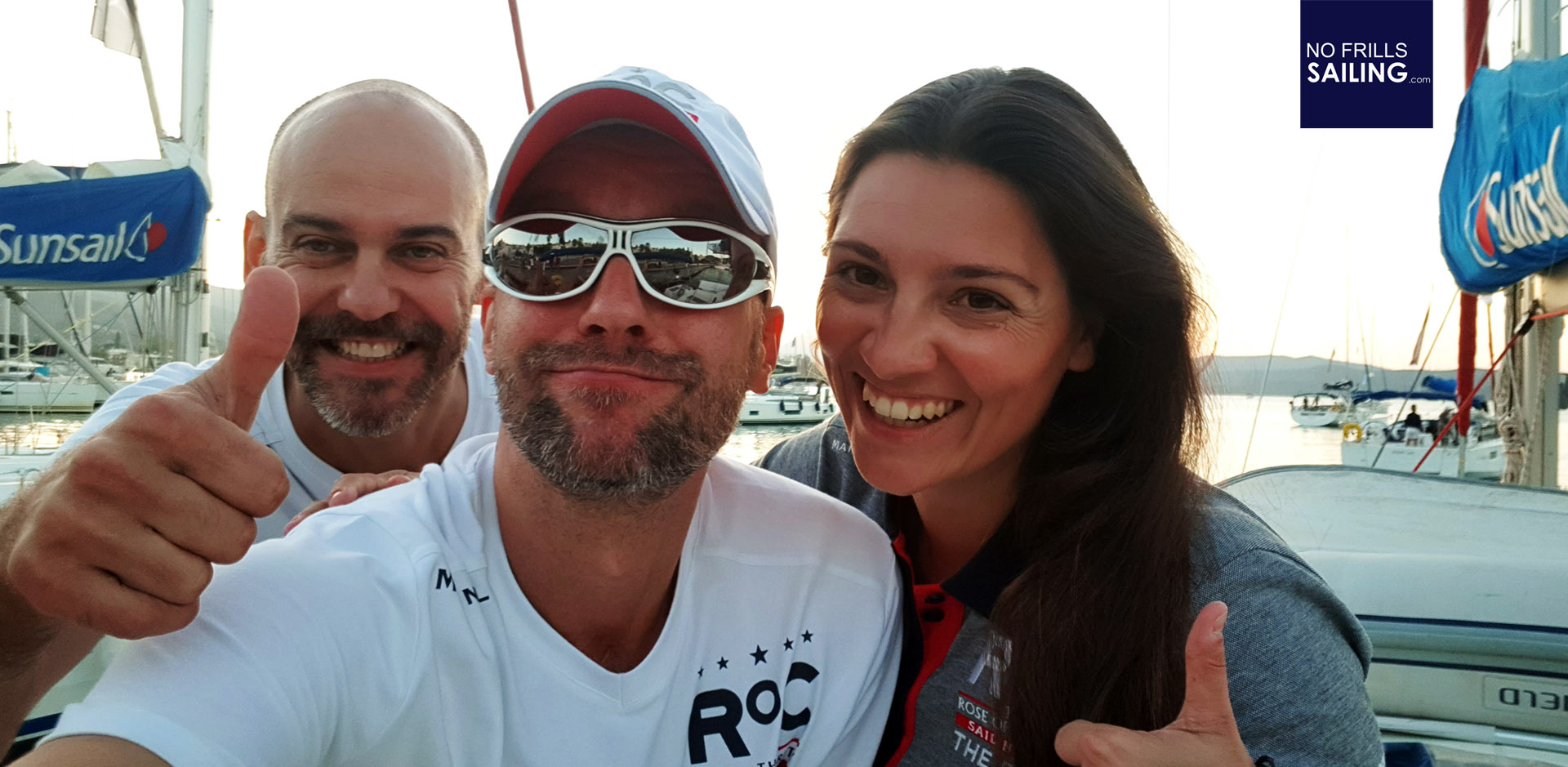
Another fourth member, Fabienne McLellan who is a member of Ocean Care as well, was scheduled to join my crew a day later. What an honor for me – Although I was handed probably the oldest and the smallest boat of the fleet I took over responsibility to skippering the guys from Ocean Care. And here is where the “Charity” comes to the “Rose of Charity”. Because initially this race isn´t just fun for the VIPs. Well, okay, it´s an awful lot of fun and the emphasis of this race isn´t on pure racing – the focus is on creating awareness for the charity organizations – this year for Ocean Care.
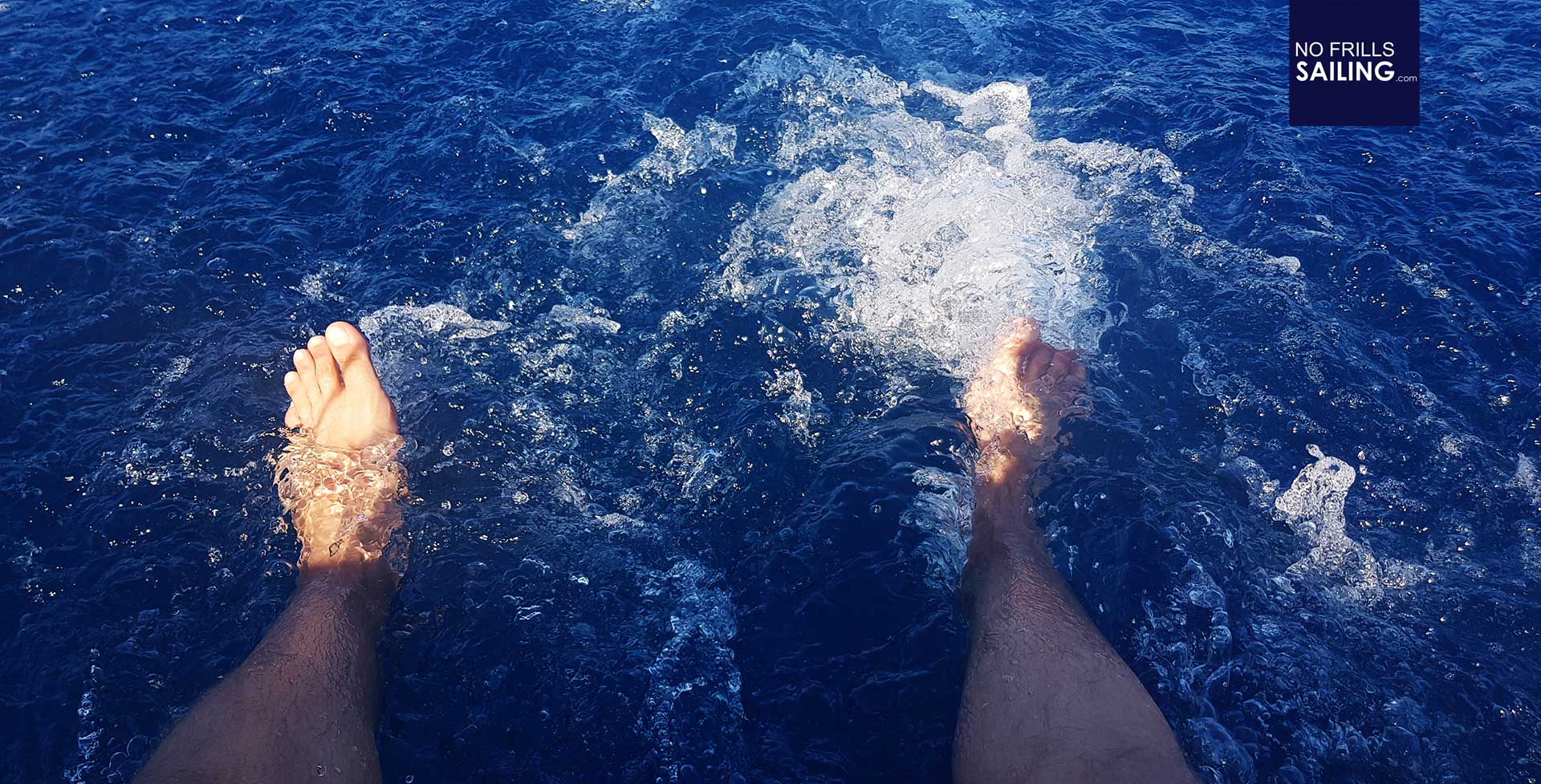
Nevertheless, regatta is a word being taken seriously by the organizers. When last year the race was sanctioned by the official Croatian Sailing Association, this year we´ve had a crew of 5 people with us staging a professional race committee with pro VHF-announcements and starting procedures, a professional Yardstick-measured ranking and super service during the sailing legs. I took the challenge very seriously and was eager to deliver the best possible performance for APRIL STAR and her crew.

Well, which is more easy said than done: Leaving Hamburg airport in rainy 10 degrees Celsius and arriving to Athens under a clear blue sky with summer still in full bloom, temperatures well above 25 degrees Celsius and being welcomed by a bunch of actors, sunnyboys, starlets and stars ready to party hard is quite a challenge: But I can tell I was true to my skipper´s pride and went to bed early, being the first to get up and ready the boat no matter how late my crew arrived back from the daily beer feast at the jetty. Now, let´s cast off and race!
Racing tactics for light wind conditions
Unfortunately weather conditions were not very favourable for having a high intense regatta. Just light winds caused by a static high pressure system that was delivering nice weather – without any winds at all! There was a nice Meltemi blowing just 50 miles to the east, leaving the fleet virtually “dry”. So on the first day – being perfectly prepared and having delivered a great crash course to my fellow crew members in sailing a boat and racing tactics – the fleet went out under engine, hoping to find some thermal winds later the day.
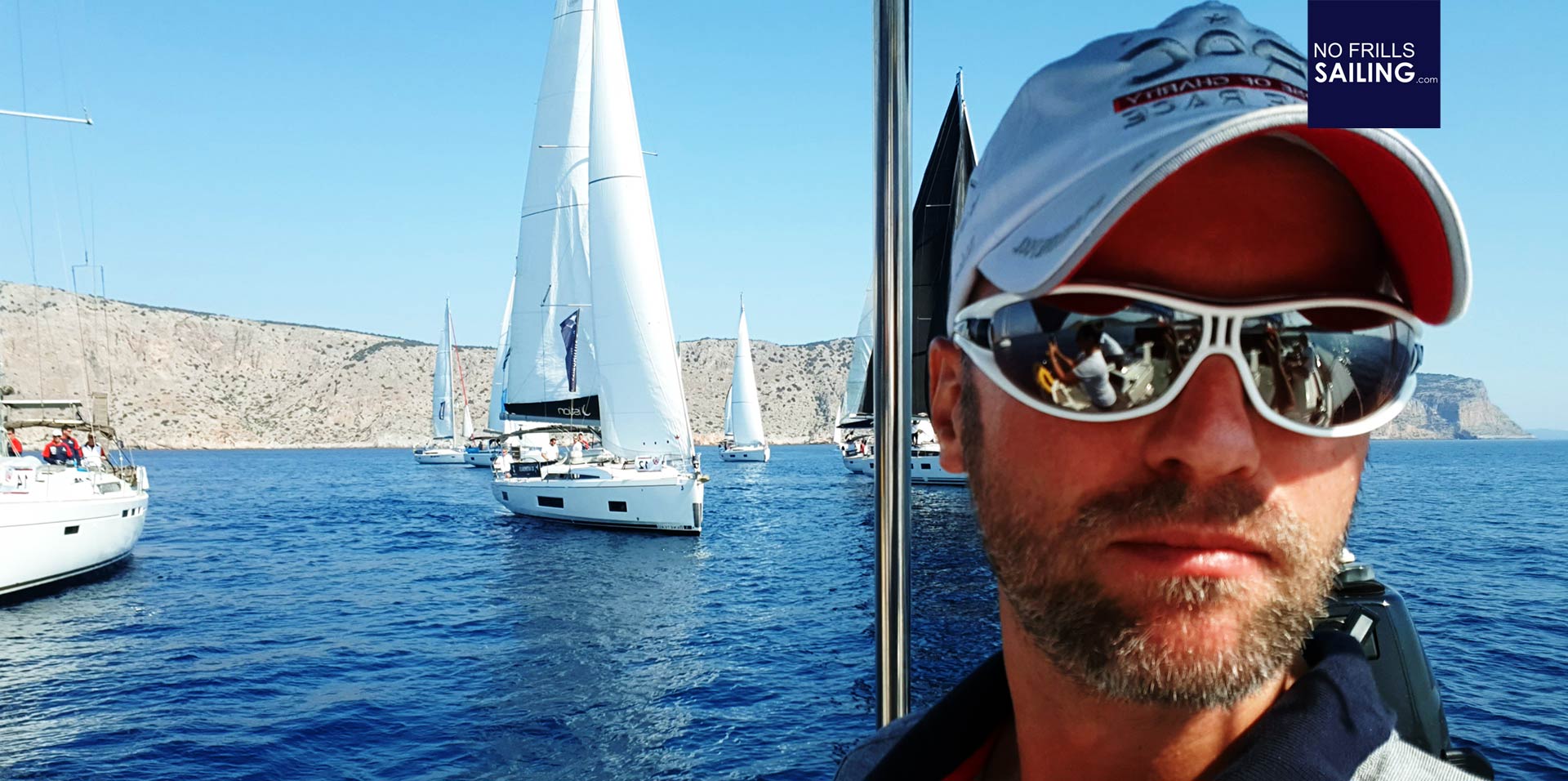
Which we did. Lucky to having our race organizers comprised of locals who know when and where to expect local wind fields generated by sea-land-winds we set up a start in the late noon. Since this was my first real start with a new crew and having the same level of nervousness on 19 other monohulls around us, my strategy was to keep APRIL STAR away from the hazzle and try to start from behind with a perfect time-to-distance timing: it went perfectly well and we soon found our boat in the middle field.
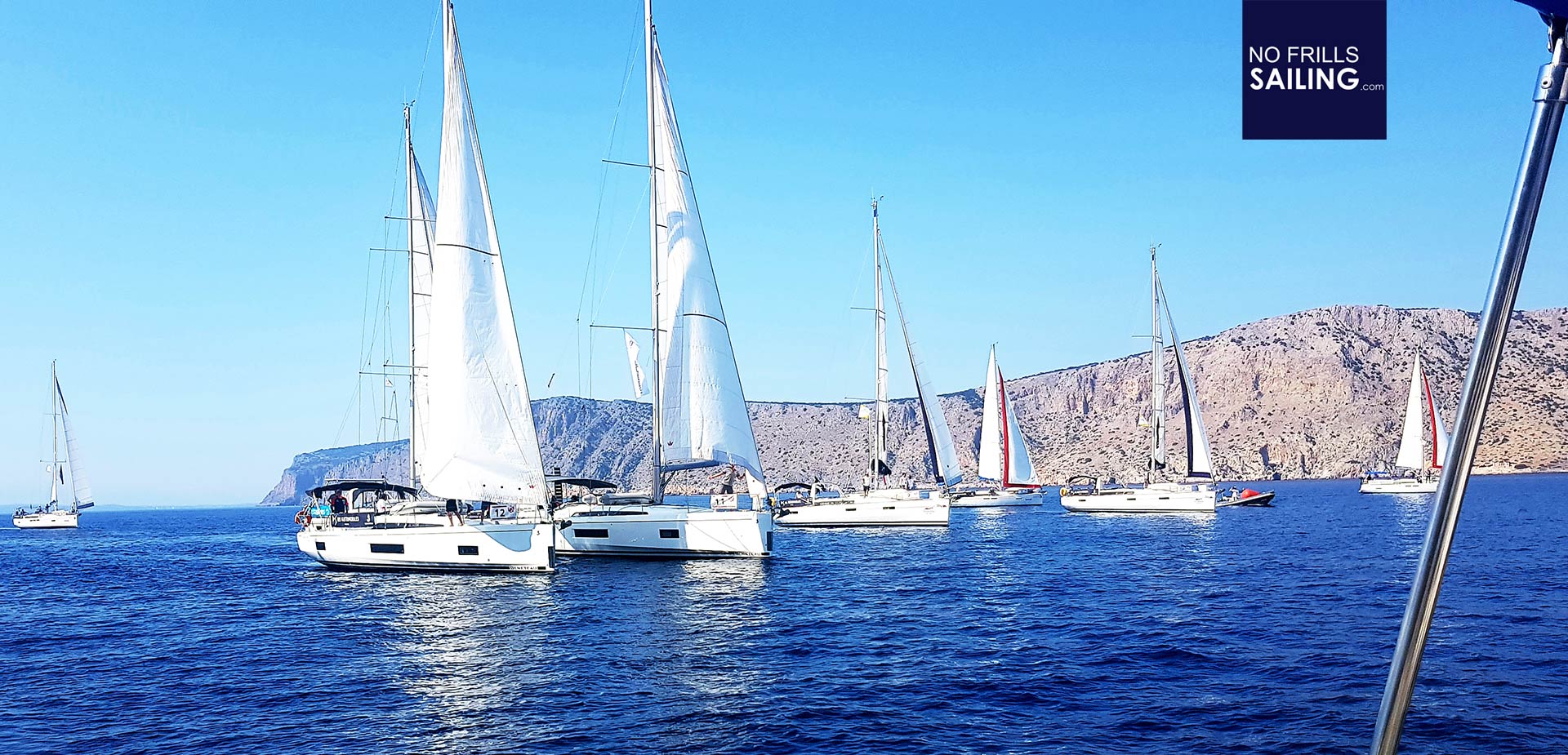
But “racing” in light winds – this I learned very quickly – means more than ever guessing where there would be some wind, some more wind than here. So we looked out for the slightest change in water surface and tried hard to determine where to position our boat for the next puff. We did well whilst other did better and APRIL STAR soon lost positions. On this first day the trick was to stay directly near the shores where somehow slightly more wind gathered. We tried to find our luck more to the sea, which was a wrong bet. In the end I calculated that APRIL STAR wouldn´t make it in time over the finish line and announced our DNF via VHF to head for the harbor. 5 other boats did as well. Not the brightest start …
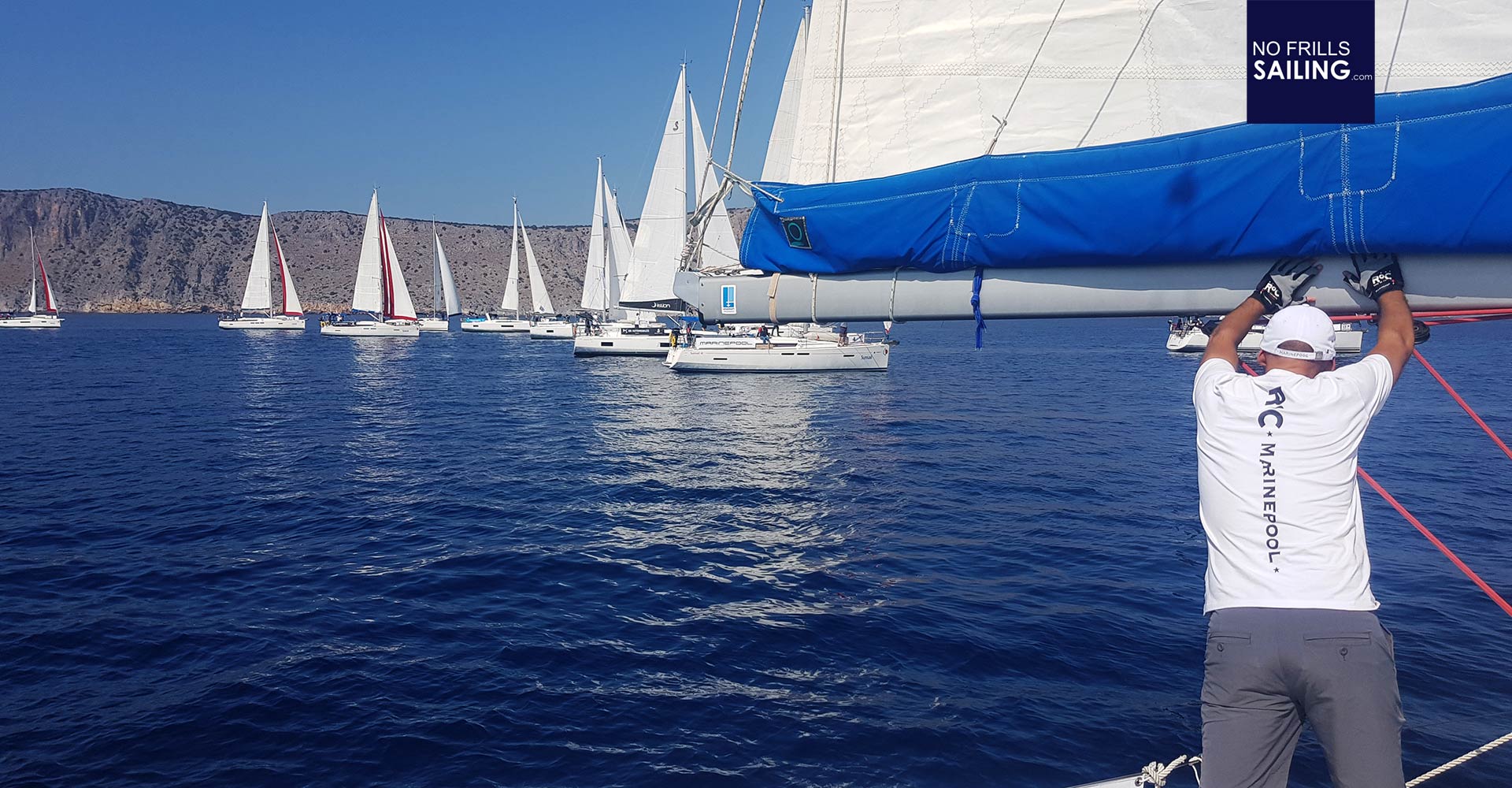
The second day was better, much better. Again, just very light winds. We managed to start quite well and I ordered a flat running point of sail. The main sail to one side and our Genoa to the other – butterfly. Since booming out wasn´t restricted I sent Fabienne to the mast with our boat hook and Kim to the steering wheel. Hours of high concentration followed: Kim had to steer very, very precisely whilst Nic and Fab had to make sure that our sails could catch as much wind as possible. My idea was to sail downwind as long as possible to luff shortly before the finish to gain some speed. As bad my decisions had been the day before, the better they had been today: APRIL STAR finished third!
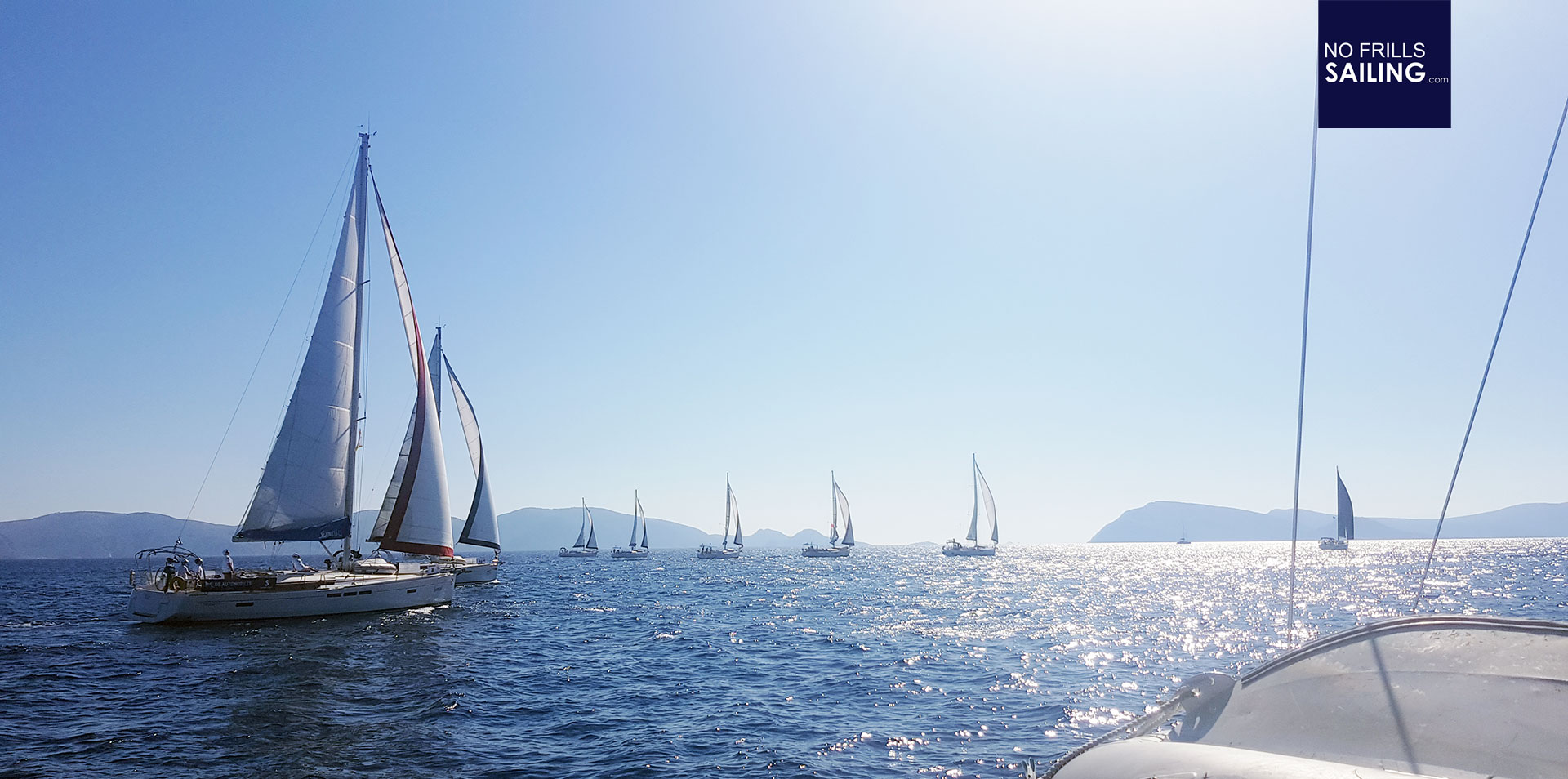
Mooring our yacht after that leg was a big high for all of us: The beer after landing was tasting ever so good! Third leg again presented a low winds-day with a start out of a calm. Exactly one minute to the start all wind went down. So sailing over the starting line was more “attended drifting” than sailing. Nervous steering, shouting from boat to boat and near-collisions. I managed to keep APRIL STAR away from the big crowd but had her in a close infight with a Sunsail 410, the newer version of my boat. Then some wind kicked in and we began to sail. With 5 to 6 knots SOG this was the fastest of all legs and sailing upwind with at least some heeling in the end created at least some regatta-feeling. This day APRIL STAR finished fourth and again the mood was very high.
Advantage for older and smaller boats?
Of course we all wished for more wind but in the end with now one week having passed by I can say that I nevertheless learned a lot about sailing. First: You need to have a light wind sail like a Code 0 or a Gennaker for your boat. Being equipped with just Genoa and mainsail isn´t just enough. Another learning: In light and lightest winds, small boats and “older” boats have a big advantage over modern, newer models.
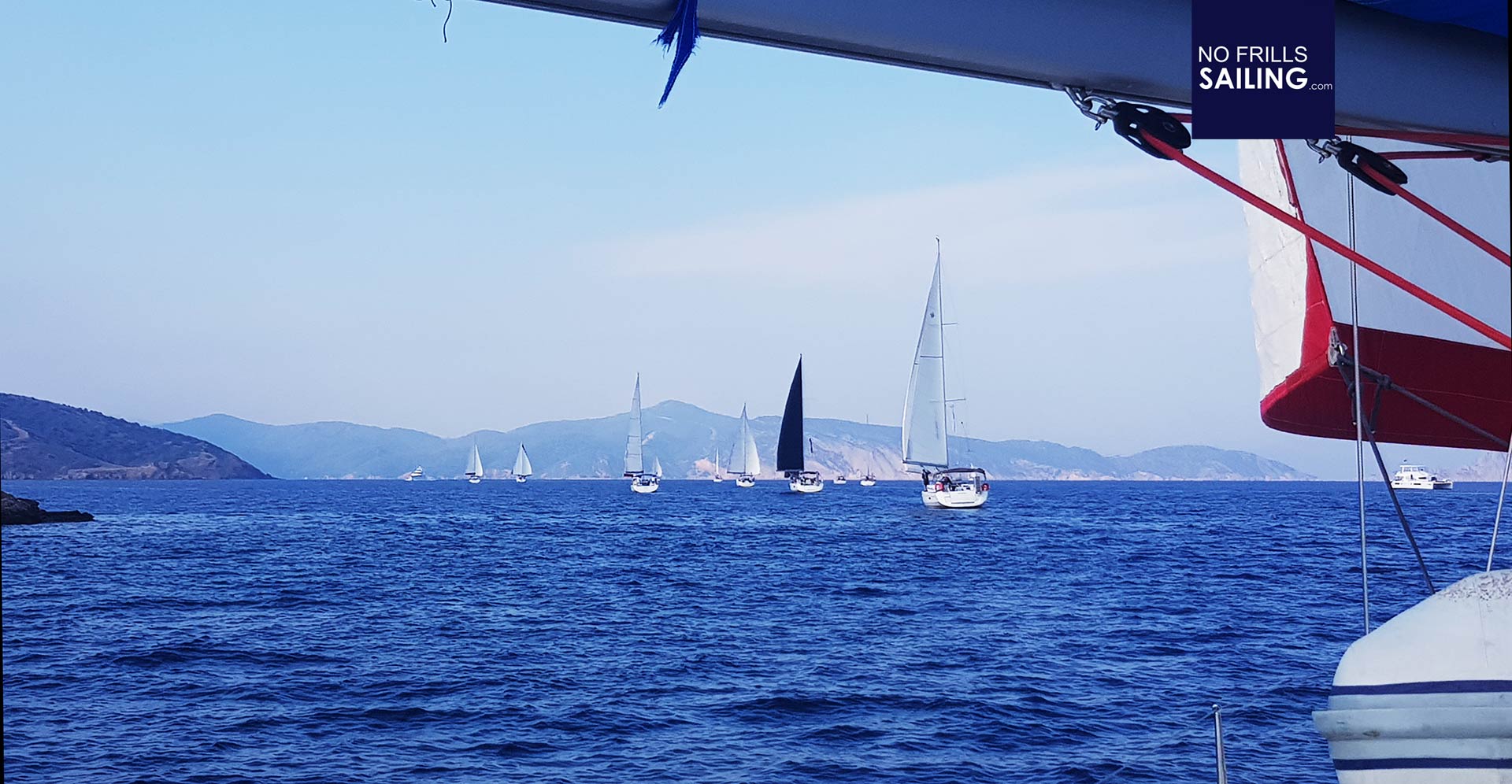
Looking at the overall ranking in the end, the big 46- and 50-footers of our fleet, among them latest Beneteau 51.1 and 46.1 yachts, finished on the last places! Why is that? Well, these yachts had only been equipped with self-tacking jibs and in-mast furling main sails: In this configuration the “length is running”-rule just doesn´t apply. The large and somewhat heavy boats just lack sail area and thus didn´t perform under light wind conditions. It was kind of heart breaking to watch these fantastic yachts staying behind and finishing on the last positions.

On the other hand, cruising yachts lack sail trim options. I´ve had this light bulb moment during the third and last leg of the race when “my” race of that day started after having the close infight with the Sunsail 410: When wind kicked in we both started at the same position. I was able to squeeze out approximately half a knot over ground more from APRIL STAR. Having an old-school mainsheet traveler I was also able to trim my main exactly to having to boom in the longitudinal axis of the yacht whereas the newer 410-model didn´t had the traveler and just means of mainsheet: My boat was able to sail 10 to 15 degrees closer to the wind which in the end meant that we finished fourth – the 410 finished twelfth!
Greek island paradise
“Rose of Charity” is more than racing – it´s also about getting to know a new sailing area. The Saronic Gulf south of Piräus is a very interesting region. Our schedule brought us to the City of Poros, a scenic small town with a long water front boasting with restaurants and bars offering the full range of tasty Greek fresh food. We also visited Nafplion, a small and picturesque place – Nafplion once was the first capitol of Greece. Highlight of the whole tour has been the Island of Hydra.
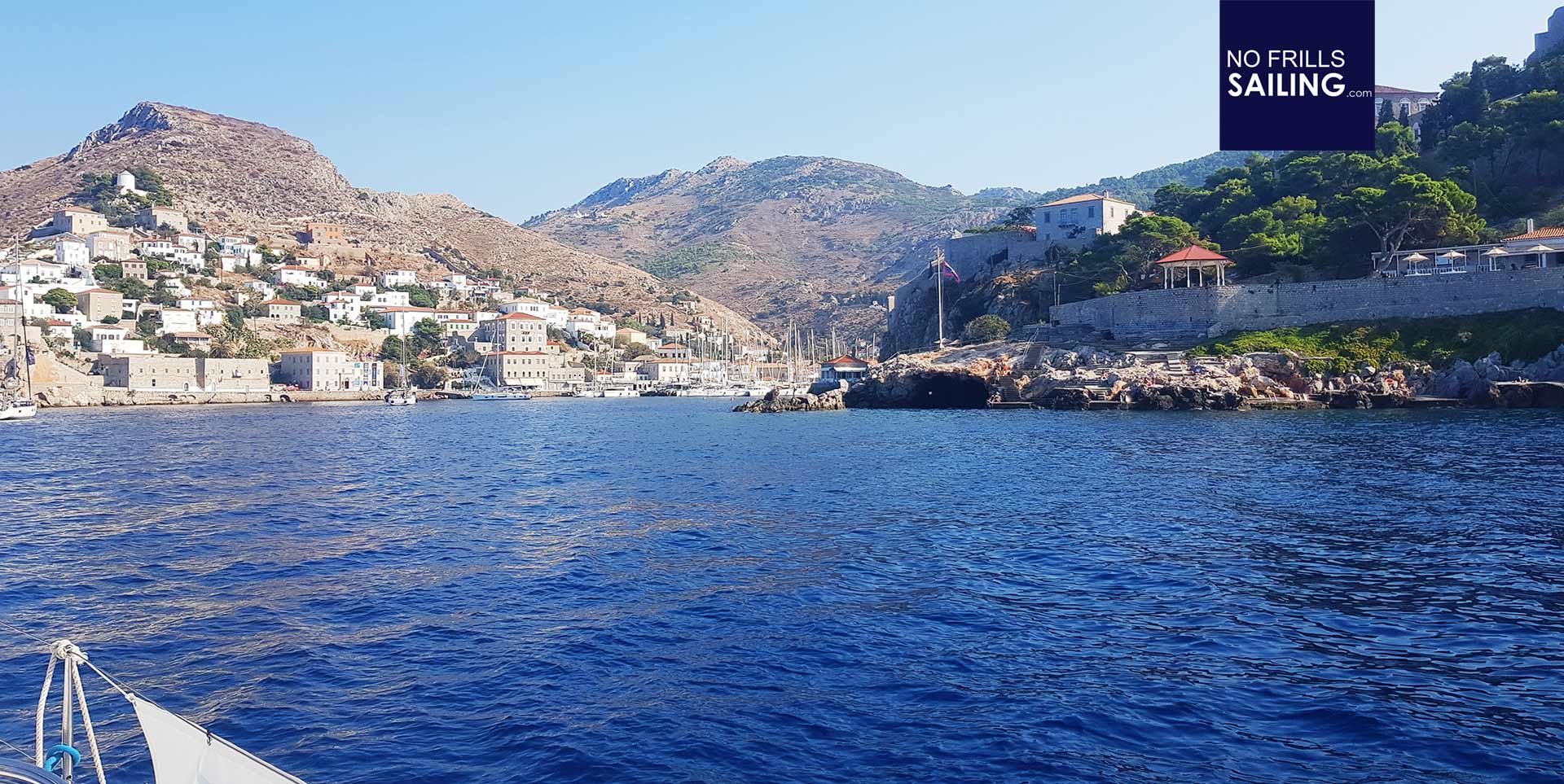
This island is famously known for its strict environmental protection laws and one of the few places where a boat can moor is the port of Hydra where our fleet had – like in every other port as well – pre-booked moorings. Mooring for this part in most of Greece is done stern-first with no moorings attached. That means skippers and crews must be able to land the boat by means of anchor. I fancy stern-first mooring but didn´t had any previous experience in anchoring so I was eager to gather as much experience as possible.
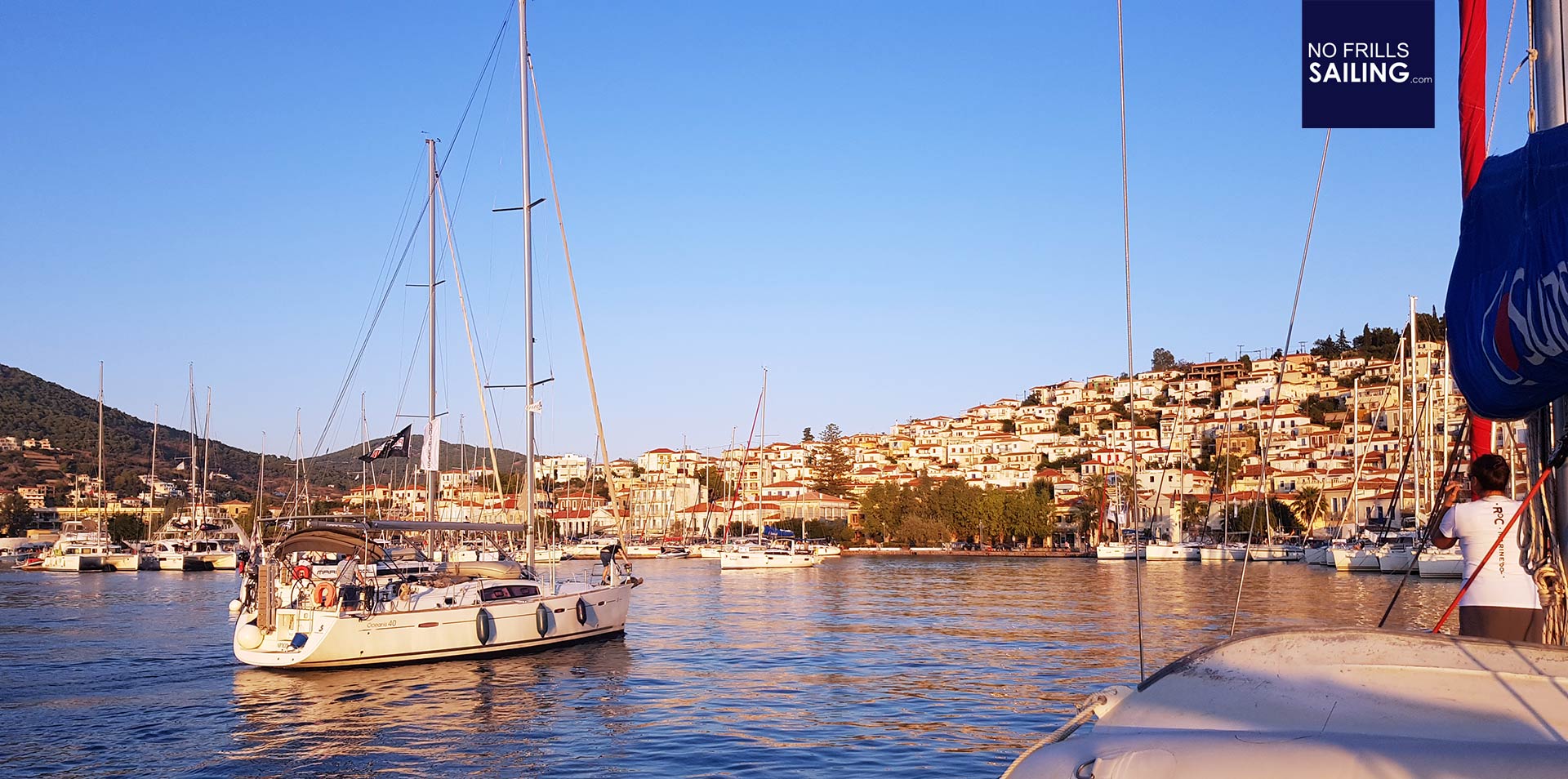
Entering the port we watched where other boats dropped their anchors, nearing their positions I tried to avoid putting my anchor and chain over theirs: In any case when casting off it was essential to go out exactly the opposite order as we came in the evening before. Landing that way turned out to work as fine as it can get: Drop the anchor 20 to 30 metres just exactly in front of the berth, going astern to the pontoon or jetty and have the stern lines attached, take in some chain until both lines and anchor chain are secured nicely. Yeah, we didn´t had any winds interfering, but in this I gained valuable knowledge that is very precious for my next sailing trips.
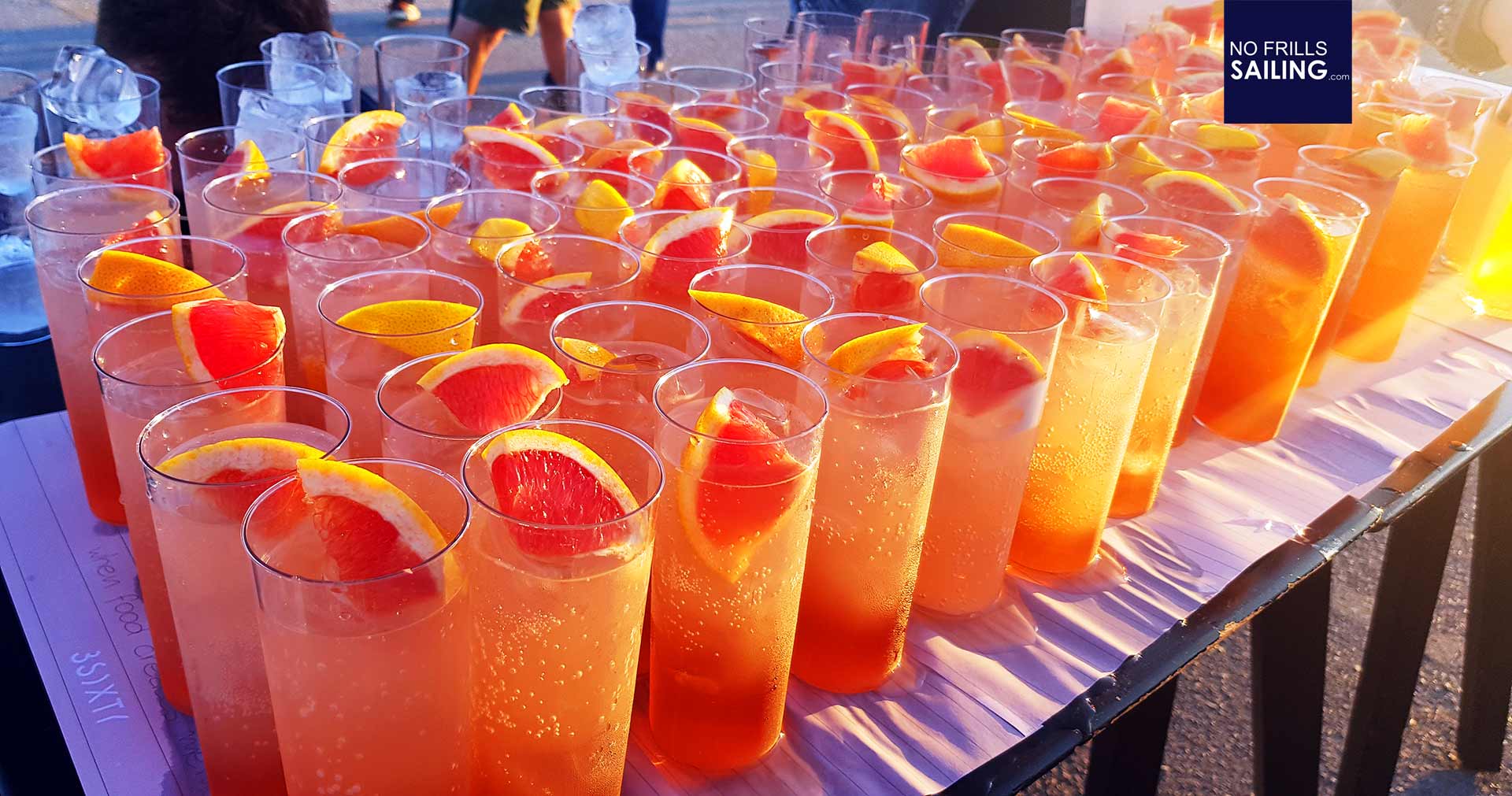
In the end landing was always a great occasion to watch and learn. 20 boats coming in literally every 2 minutes is “harbor cinema” at its best. I must say that all skippers and all crews on all boats had made a fantastic job with landing the yachts without causing damage nor any shouting.
Taking care of the Oceans
Apart from learning so much about light wind sailing, “slow” regatta-racing and seamanship regarding anchoring and mooring stern first, especially on APRIL STAR because of the specialty of my fellow crew mates Niclas and Fabienne I was also happy to receive some first hand education on marine wildlife protection and problems caused by humans in oceanic life. It´s fishing industry, water pollution (with plastic stuff) and underwater noise which are the biggest problems nowadays.
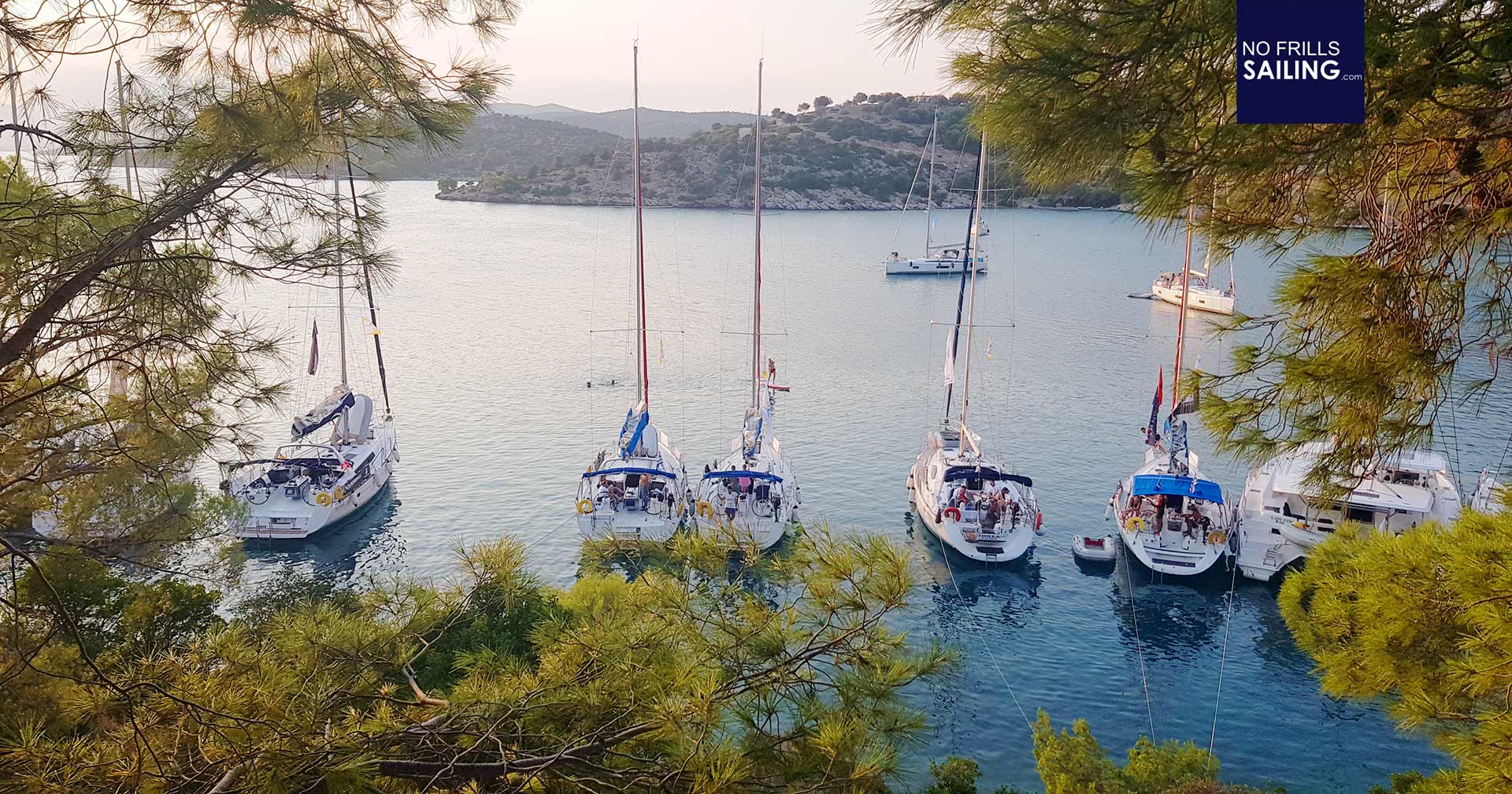
Did you know that sound-cannons used by oil and gas industry´s search for new oil fields are ten thousand times louder as a jackhammer? During oil and gas exploration with sound cannons, all Krill and small wildlife – basic food for whales and bigger fish – will be killed at an instant in a radius of 1.6 kilometres. Military sonars are causing whales and dolphins to lose orientation and ability to communicate. Thanks to my Ocean Care-crewmembers I was able to talk for hours and gain intimate insight into the current (very bad!) state of our oceans.

Of course, not everything is lost and one shall not resign facing the immense problems at hand. It was fascinating to see that environmental awareness in all of our fleet caused most crews to avoid plastic bags when re-supplying with food, we even began to collect plastic garbage from the sea. Eating and cooking for most crews meant to skip meat and enjoy the full taste of the delicious Greek fruits and vegetables. Fascinating how fast people can change – without having been applied pressure nor having to really skip something.
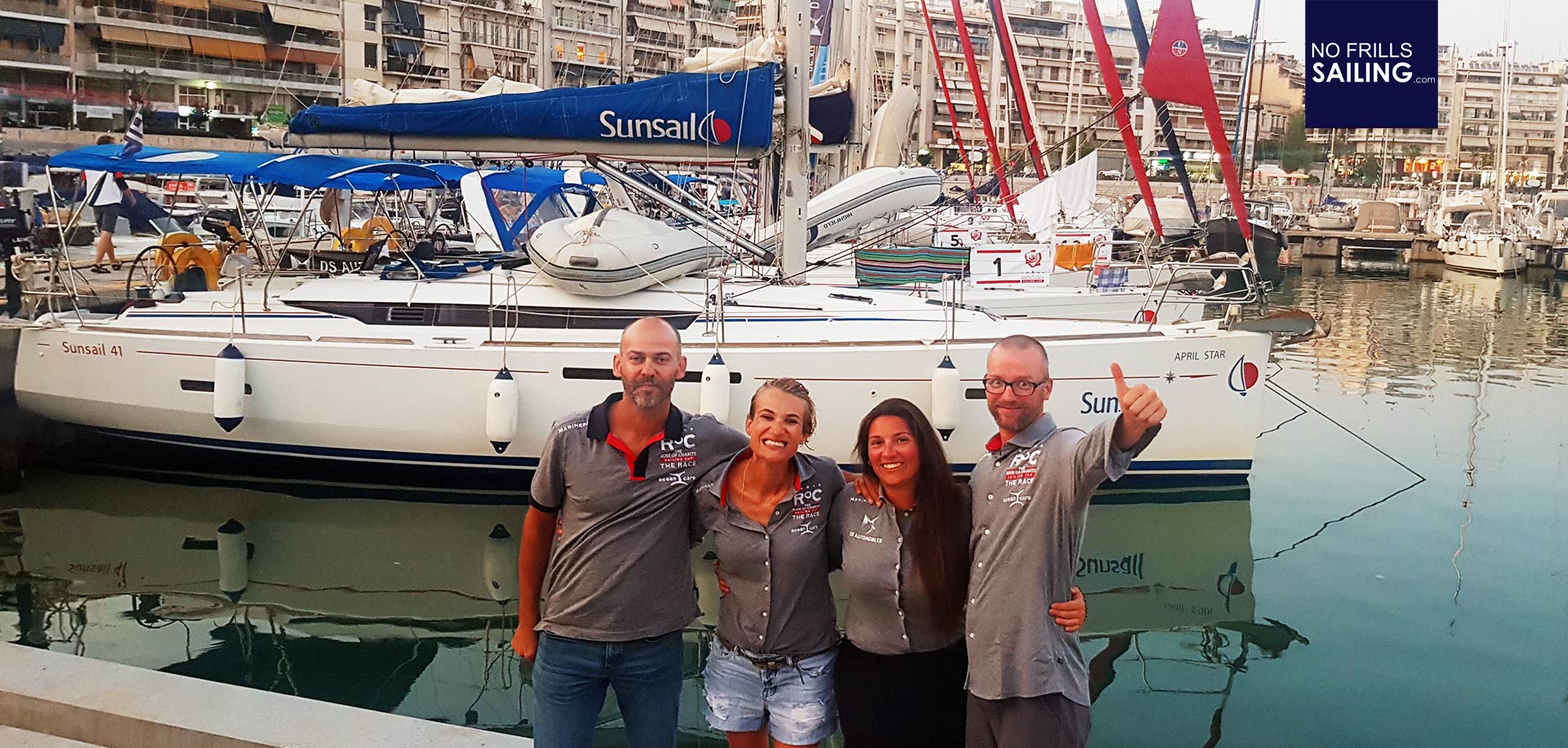
So in the end I am very thankful to Nic and Fabienne for their kindness and openness. Although I personally would always consider a true and fundamental discussion on environmental topics being closely connected to a discussion about capitalism and so-called “free market”, I am truly impressed by the work these people are doing in lobbying environmental causes at the UN and other political occasions. I hope they can go on with their important work and could re-gain some energy during this sunny week aboard APRIL STAR.
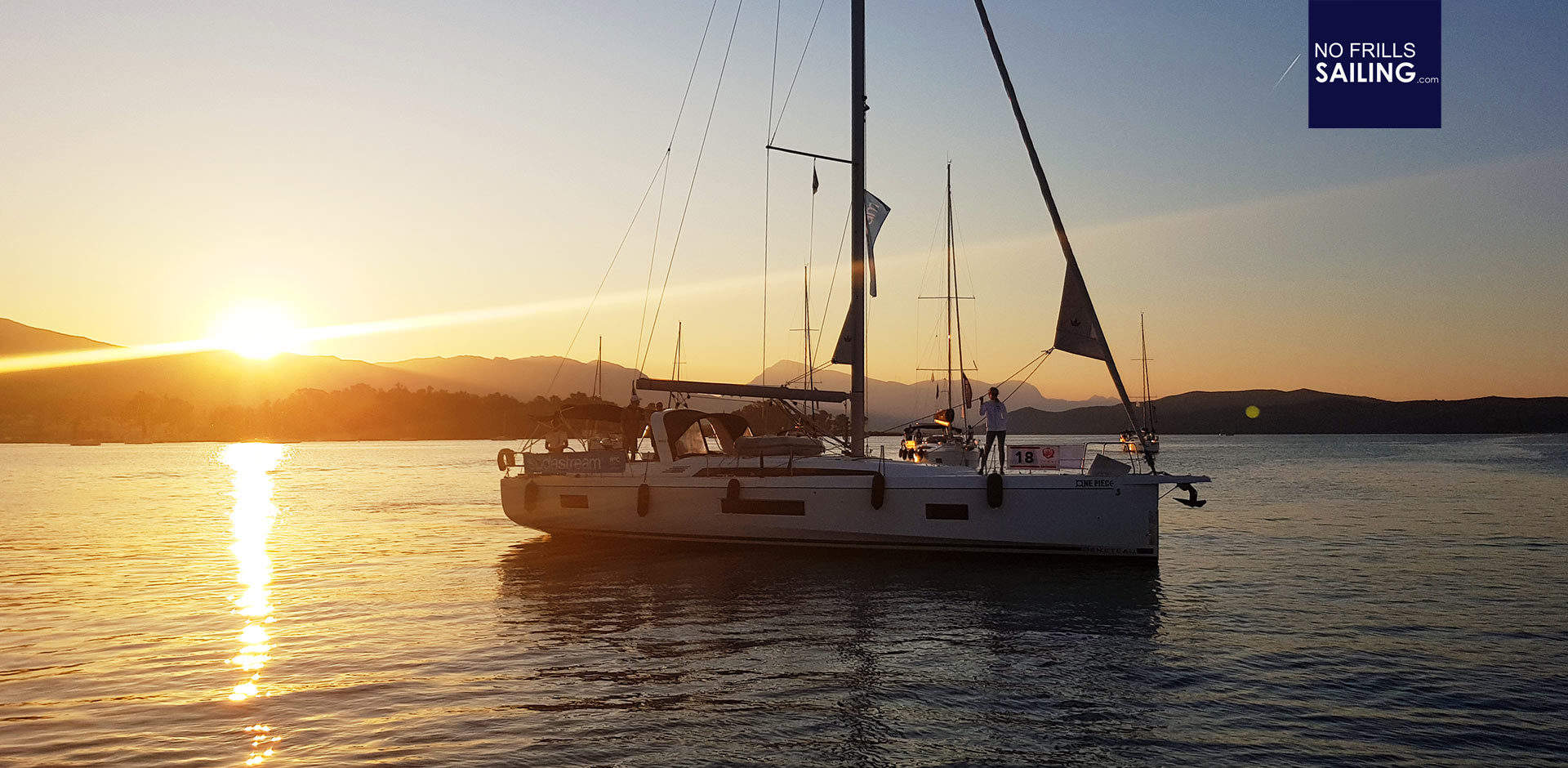
After one week and just three racing legs, our well-aged Sunsail 40-feet boat finished sixth overall which is a great success for me personally. 130 miles sailed, of these some 30 miles “racing” we saw the small and “old” boats on the first places, keeping a huge distance to all the 46- and 50-footers which clearly lost in these conditions. Hoping that I have the honour of skippering next year in the “Rose of Charity” again, I would opt for some more winds then and hopefully a slightly larger boat of 45-or-so feet. What I wouldn´t have changed is my crew – always fun, always open, always awake when things got serious. A true pleasure!
Thanks to all partners & sponsors DS Automobiles, Marinepool, Sunsail & Moorings, Sodastream and of course our friends from Ocean Care
You might also be interested in these articles:
Get out and race! At the “Rose of Charity” Race 2018
Racing tactics for beginners with Tim Kroeger
Training for Vendeé 2020 – solo sailor Lizzy Foreman in the IMOCA 60
